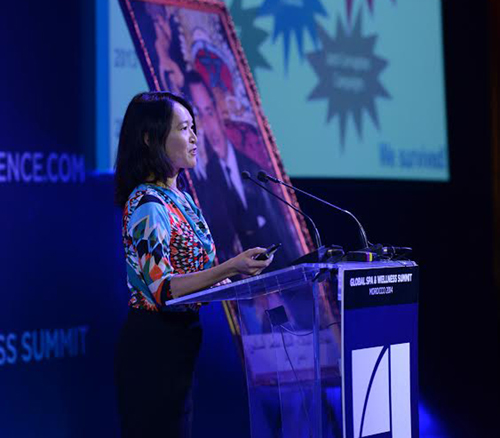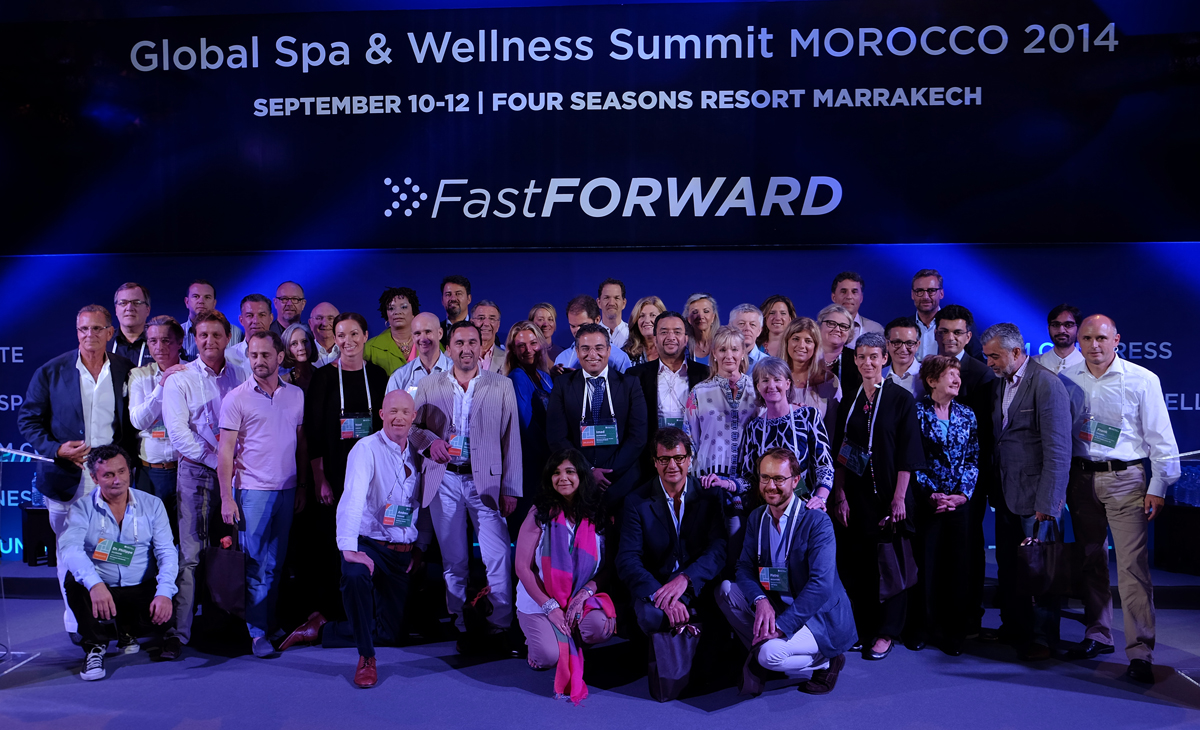19 Sep 2014
GSWS 2014 releases Global Wellness Economy Monitor report
BY Helen Andrews

The global spa industry has grown by 58 per cent since 2007 and is now valued at US$94bn (€73bn, £57bn), according to research released at last week’s Global Spa & Wellness Summit (GSWS) in Marrakech, Morocco.
What’s more, the number of spa facilities worldwide has increased by 47 per cent – from 71,762 facilities in 2007 to 105,591 facilities in 2013.
These figures form part of the Global Wellness Economy Monitor, a new study conducted by GSWS’s independent research partner, SRI International. The spa industry data was an update of SRI’s 2008 Global Wellness Economy Report which was based on 2007 figures (see Spa Business, issue 4, 2008, p40).
When the global spa industry is combined with three other segments – wellness tourism, thermal/ mineral springs and wellness lifestyle products and services – SRI puts the global spa and wellness market at US$3.4tn (€2.6tn, £2tn).
Wellness tourism had an increased value of US$494bn (€384bn, £301bn) in revenues in 2013 – a 12.5 per cent rise from 2012. This growth significantly outpaces SRI’s original forecast of 9 per cent as predicted in its 2013 Global Wellness Tourism Economy research (see Spa Business, issue 4, 2013, p80).
The new Global Wellness Economy Monitor study includes the first-ever analysis of the worldwide thermal/ mineral springs market, which is worth US$50bn (€39bn, £31bn), spanning 26,847 properties across 103 nations.
The study also indicates that there’s been a boom in wellness lifestyle products and services as consumers adopt proactive approaches to health and wellness. This cluster grew by 62 per cent from 2010-2013 and represents a US$2.8tn (€2tn, £1.7tn) market – contributing the lion’s share of the spa and wellness market’s US$3.4tn (€2.6tn, £2tn) value.

The US$94bn Global Spa Industry
Revenues from spa facilities, which amounted to US$74bn (€57bn, £45bn) in 2013, form the biggest part of the global spa industry. But the overall US$94bn (€73bn, £57bn) figure also includes businesses that enable and support the sector. Spa investment capital amounts to US$19bn (€15bn, £12bn), spa education equals US$800m (€621m, £488m), spa media/ education/ events generate US$200m (€155m, £122m) and spa consulting is worth US$100m (€78m, £61m).
Europe still has the world’s largest spa market, generating US$29.8bn (€23bn, £18bn) in revenues. However, Asia-Pacific has overtaken North America to become the second largest market, but it’s a close call between the two – spa revenues in Asia-Pacific sit at US$18.8bn (€15bn, £11bn), compared to US$18.3bn (€14bn, £11bn) in North America.
Asia-Pacific also holds the distinction of having the most locations: 32,400 spas and counting.
The US$494bn Wellness Tourism Industry
SRI’s 2013 The Global Wellness Tourism Economy research was the first to highlight the wellness-focused travel segment, finding that wellness travel is growing nearly 50 per cent faster than global tourism overall. The figures were updated in the 2014 Global Wellness Economy Monitor study and show that as a US$494bn (€384bn, £301bn) industry, wellness tourism represents more than one in seven – 14.6 per cent – of all travel dollars spent worldwide.
Wellness-focused trips jumped from 524m to 586.5m from 2012-2013 and wellness tourists remain big spenders. International wellness travellers spend 59 per cent more than the average tourist, while domestic tourists spend 159 per cent more.
The US$50bn Thermal/ Mineral Springs Industry
The 2014 Global Wellness Economy Monitor study includes the first-ever benchmarking of the thermal/ mineral springs market.
While hundreds of thousands of springs occur naturally worldwide, SRI’s report only included revenue-earning springs – for example with built facilities. It segmented the industry into thermal/ mineral spring facilities that offer bathing with spa services and those without.
It was revealed that thermal/ mineral springs without spa services are far more prevalent – they account for 20,343 establishments against 6,504 that have spa facilities. However, those springs with spa services earn more than twice the revenue as the springs without spa services: US$32bn (€25bn, £20bn) against US$18bn (€14bn, £11bn) annually.
Ten countries account for 85 per cent of revenues and China and Japan comprise a staggering 51 per cent of the market, driven by the massive, ongoing investment in resorts in China and the thousands of onsens in Japan. China’s hot spring market is worth US$14.1bn (€11bn, £9bn) and Japan follows closely with a value of US$11.7bn (€9bn, £7bn). National markets in Europe make up the remaining top 10 countries.
Hot Spring/ Mineral Markets Globally:
Asia-Pacific: US$26.7bn (€21bn, £16bn)
Europe: US$21.7bn (€17bn, £13bn)
Latin America: US$900m (€699m, £549m)
North America: US$200m (€155m, £122m)
Middle East/ North Africa: US$200m (€155m, £122m)
Sub-Saharan Africa: US$5m (€4m, £3m)
The US$2.8tn Wellness Lifestyle Products and Services Industry
Industries that help consumers to take a proactive approach to integrate wellness into their daily life were also taken into account in the Global Wellness Economy Monitor study. Collectively, these sectors represent a US$2.8tn (€2tn, £1.7tn) market share (see below).
Wellness Lifestyle Industry Values:
Beauty & anti-ageing: US$1tn (€0.8tn, £0.6tn)
Healthy eating/ nutrition: US$574bn (€446bn, £350bn)
Fitness & mind-body: US$446bn (€346bn, £272bn)
Preventative/ personalised health: US$433bn (€336bn, £264bn)
Complementary and alternative medicine: US$187bn (€145bn, £114bn)
Wellness lifestyle real estate: US$100bn (€78bn, £61bn)
Workplace wellness: US$41bn (€32bn, £25bn)
SRI predicts that these wellness lifestyle industries will grow faster than the global spa economy, as consumers take charge of their preventative healthcare.
Close Window